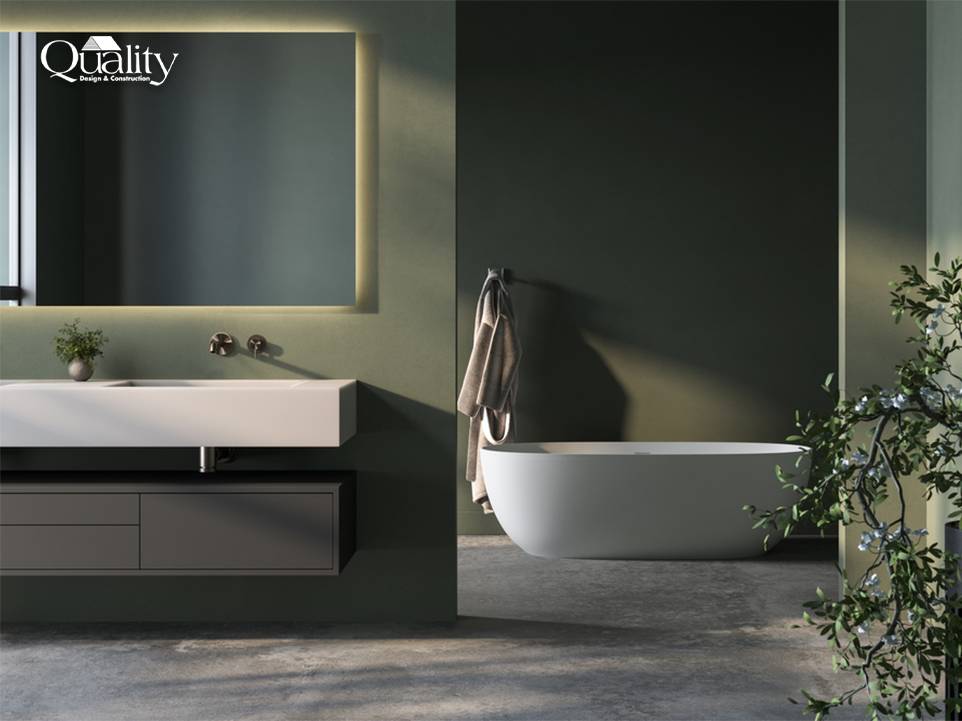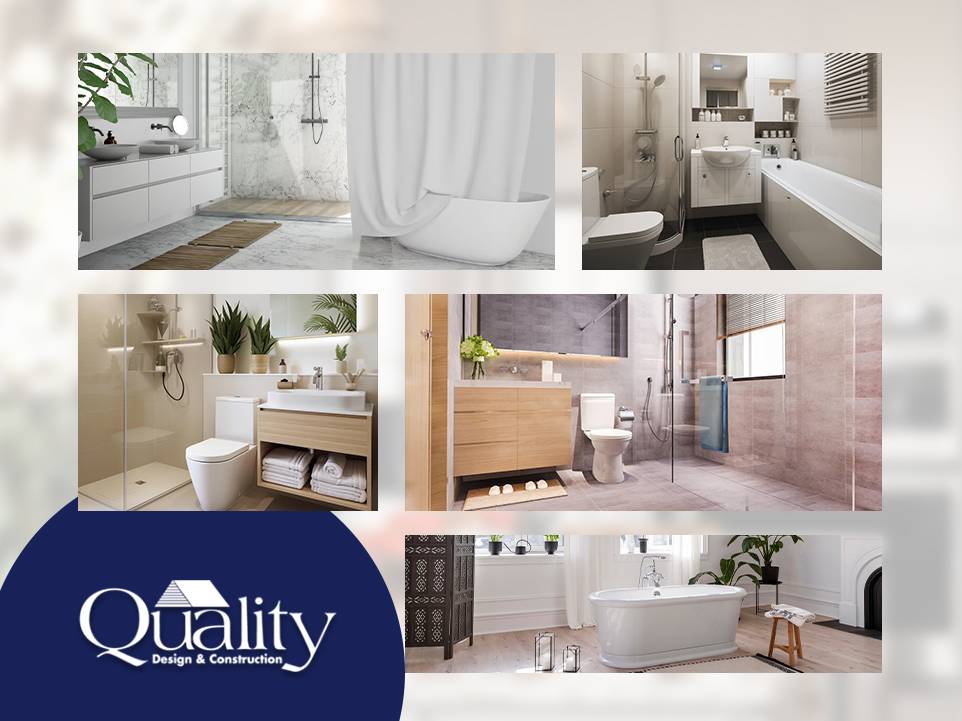The bathroom is not just a space; it’s one of the most frequently used areas in a home. Everything in this space, from fixtures to finishes, needs to be durable and resilient. This includes the ceiling, which faces challenges like humidity, moisture, and steam and results in mold.
To keep the ceiling safe from these problems, you must choose the right type of paint. However, if you are confused about selecting a suitable one, you need to stop worrying about that.
Read this guide till last and get complete information on different types of paint for the bathroom ceiling.
Why Paint Choice Matter for Bathroom Ceiling?
Bathrooms experience a lot of moisture, humidity, and steam, which can cause regular paint to peel or crack sooner than expected. That’s why it’s so important to choose moisture-resistant paint for your bathroom ceiling.
For example, if you enjoy steamy showers and suddenly notice bubbles or peeling on the ceiling, it’s likely because you used normal paint. If you had chosen the right paint, this wouldn’t have happened.
Using the wrong paint can lead to expensive repairs. So, always pick the correct type to keep your ceiling looking good and reduce the need for frequent touch-ups.
Best Types of Paint for Bathroom Ceilings
Here are the few recommended types of paint you can consider for your bathroom ceilings:
● Water-Based Latex Paint

Water-based latex paint is a top choice for bathroom ceilings. It’s durable, dries fast, and resists moisture, making it perfect for humid areas like bathrooms. Available in many colors, it fits any bathroom style.
The biggest advantage of this option is that it is easy to clean and helps control peeling or cracking, so your ceiling stays fresh for longer. It’s an excellent option for bathrooms with regular steam or moisture exposure, ensuring protection without worrying about frequent peeling or damage.
Pro Tip: Always use a mold-resistant or moisture-blocking primer before applying latex paint for better adhesion and lasting results.
● Oil-Based Paint

Oil-based paint is another option for bathroom ceilings, known for its durability and smooth finish. It creates a hard, moisture-resistant surface, making it ideal for bathrooms that experience high levels of steam and condensation.
This type of paint is less likely to show brush marks, giving your newly designed bathroom ceiling a polished look. Oil-based paint also adheres well to various surfaces, including older ceilings that may require extra coverage. Though it takes longer to dry, its tough finish makes it highly resistant to wear and tear.
Pro Tip: Ensure proper ventilation while using oil-based paint, as it emits stronger fumes than water-based options.
● Eggshell Paint

If you prefer a soft, low-sheen finish, eggshell paint is an excellent choice for your bathroom. It offers a subtle look that is less shiny than satin or semi-gloss, creating a warm and inviting atmosphere.
While it can handle light moisture, eggshell paint works best in bathrooms with less frequent use, such as guest bathrooms or half baths. Its smoother finish effectively hides small imperfections on the ceiling, providing a clean appearance without the glare that shinier paints can create.
Pro Tip: Use eggshell paint in bathrooms that don’t have high humidity or heavy steam, as it’s not as moisture-resistant as other options.
● Satin Paint

For people who are picky about paint choices for their bathroom ceilings, satin paint is an excellent pick. It offers a balanced sheen that isn’t too shiny, giving your bathroom a stylish look without being extra.
Satin paint is great at resisting moisture, making it perfect for areas with steam from showers and regular cleaning.
It does a better job of hiding small imperfections than shinier paints, but preparing the ceiling well is still important. A smooth surface will guarantee that the satin finish looks its best.
Moreover, it dries quickly, allowing you to complete your bathroom renovation in less possible timing and enjoy its long-lasting appeal.
Pro Tip: Consider testing a small area first to see how the satin finish looks in your bathroom’s lighting before painting the entire ceiling.
● Semi-Gloss Paint

If you are remodeling a bathroom and have already tried the above recommendations. But this time, you want something new. Then you can go with Semi-gloss paint for the shiny finish and durability. Also, it reflects light well, which can make your bathroom appear brighter and more spacious.
It also provides excellent washability, making cleaning any splashes or marks easy. Semi-gloss paint is particularly suited for high-humidity areas, ensuring that it effectively withstands moisture. Its smooth surface can also help hide small imperfections in the ceiling.
Pro Tip: While both semi-gloss and satin finishes are great for bathrooms, our experts recommend semi-gloss for areas with higher humidity.
FAQs
Why is white a popular choice for bathroom ceilings?
White is the go-to choice for most people because it is bright, clean, and reflects natural light. Also, it makes your space look larger and more open.
What must one consider when choosing bathroom ceiling paint?
When selecting paint for a bathroom ceiling, think of moisture and mold. Use moisture-resistant paint, like semi-gloss or satin, which helps control water damage. Choose mold-resistant options to keep mold from growing. Also, apply a primer to ensure better sticking and a longer-lasting finish.
How can I stop my bathroom ceiling paint from peeling?
Peeling can happen if there is too much moisture. Use an exhaust fan to keep the air dry. For better results, choose moisture-resistant paint, like semi-gloss or mold-resistant types. Always apply a primer before painting, and regularly check for leaks and mold.
Is ceiling paint different from regular paint?
Yes, ceiling paint is different from regular paint. Regular paint is supposed to be thicker and used to hide cracks and bumps, while the other has a flat finish to reduce glare and make ceilings look smooth.
Get Quality Design and Construction Expert Guidance To Choose the Right Type of Paint
From a small bathroom to the largest one, you can create a relaxing space to chill out after a hectic routine. But what’s the reason when you have a moldy and cracked ceiling due to extreme moisture exposure and splashes? It sounds like an irritating situation, but you can stop this nightmare by using the correct type of paint for your bathroom ceiling, which we recommend.
However, if your bathroom ceiling has some special conditions or you want to talk with an expert before making a final decision, you can easily contact Quality Design and Construction’s bathroom remodeling professionals, who are always ready to share information that is beneficial for you.



